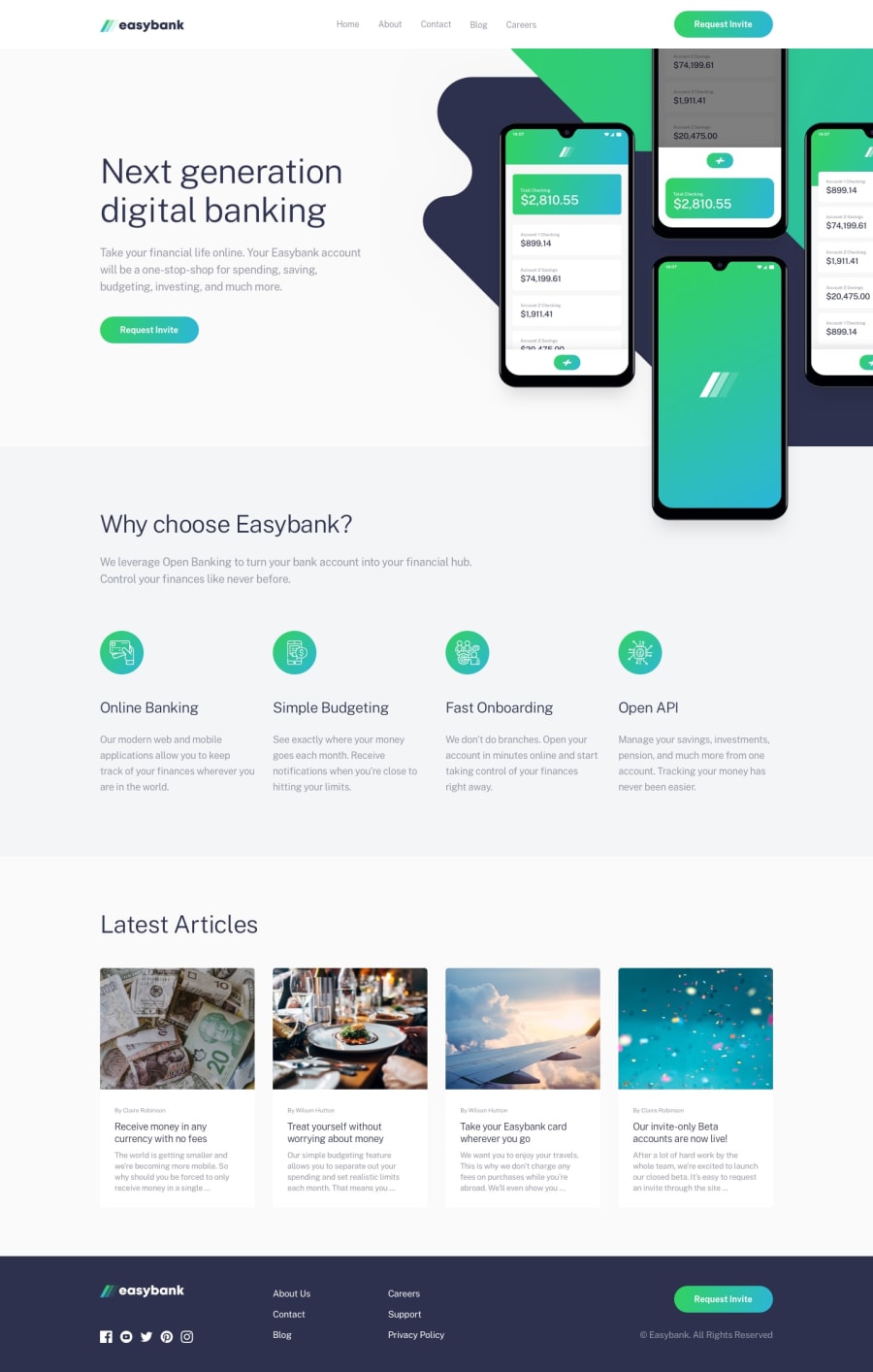@grizhlieCodes
Posted
Hi Ameya!
Overall, great work and clean code, with nice and ease-to-understand classes. Also good use of SASS.
I now have a suggestion and a question 😁
**Suggestion: ** Try building the entire header+navigation with just 1 nav element. It may seem counter intuitive but it's not all that difficult to style it and seeing your code makes me think you might have considered this already.
There is a tiny bug with your navigation: open up the mobile-menu, drag your screen to the next breakpoint and the mobile AND tablet/desktop nav still show. This is easy to fix so whatever way your prefer works fine I'm sure.
I guess it's important to note that the way I code headers (with 1 set of html) is simply due to having tried it once and i just sort of stuck to it. So there's a bucket of bias with my suggestion 😎
Question: Looking through your mixins I noticed you do a breakdown-up and -down. Why is that?
I ask because when coding I start on a mobile-first design and then I simply code for tablet, and eventually, desktop. I find this to be the simplest way -> start from the simplest design iteration (always mobile, always basic single column layout) and increase the complexity as you increase and traverse through the next breakpoints with min-width.
So I'm trying to udnerstand the benefit of having max-width also, could you please explain your logic/benefits of also having breakpoint-down?
Awesome work overall 👍
@ameyadeokule
Posted
@grizhlieCodes Your Answer: The mixins are for showing elements above or below certain screen sizes. If there would have been a requirement to show something below a certain screen size then I would have used a breakdown-down mixin and vice-versa, it helps to keep the code organized. The max-width is to not allow flex elements to grow out of proportion and always center themselves in case of larger screen sizes. I will surely try to use your suggestions and fix the bug as soon as possible. The multiple navs were because of the overlay which was to be added on the nav class itself so that I could write less JS. Again Thanks for the feedback, I appreciate that you took the time out look at my code.

